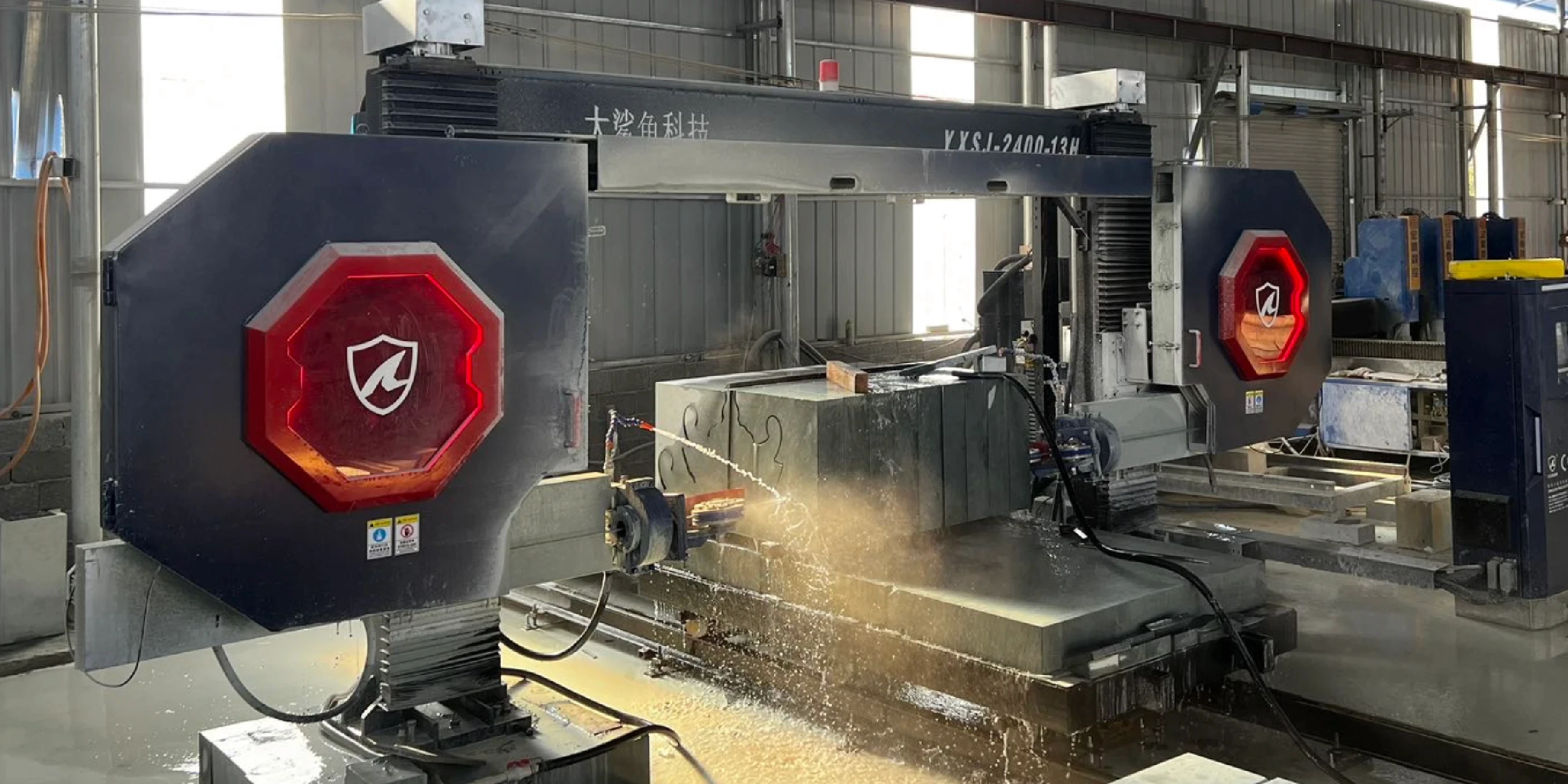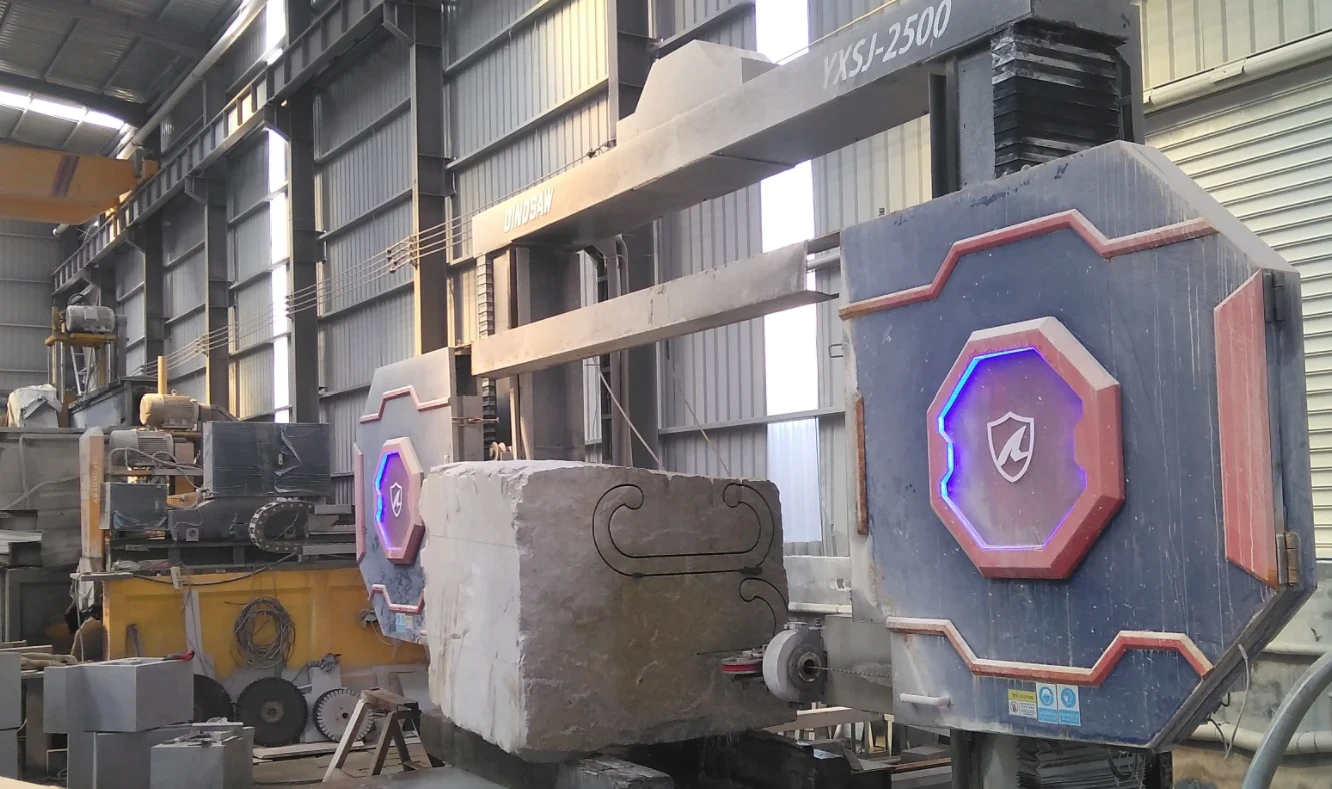Hi, this is Lizzy from Dinosaw ( Not a Robot ). Which Machine ( model ) do you want? Please WhatsApp us now
Choosing a CNC wire saw? This guide compares models like the YXSJ-2500-16pro based on material, size, and budget. Make an informed decision for your workshop.
Choosing the right CNC wire saw requires clarity on key decision factors: machine size, axis configuration (4-axis vs. 5-axis), material compatibility, and total cost of ownership. This guide provides a straightforward decision framework, ensuring you select the right model for your specific materials, project complexity, and budget.
Key Decision Dimensions to Choose a CNC Wire Saw
Before comparing models, you must first define your operational needs. Your answers to the following six questions will form the foundation of your selection criteria.
1. Maximum Working Dimensions & Footprint
The physical size of the blocks you process is the first filter. The DINOSAW Pro series offers three primary sizes, with the model number indicating the max cutting length. Measure your largest typical workpiece and your available floor space. Remember to account for loading/unloading and maintenance access. While customization is possible, selecting a standard model is the most cost-effective path.
- YXSJ-2500-16pro: 2.5m x 1.5m max working dimensions (Footprint: 6.3 x 7.9 x 4.0 m)
- YXSJ-3000-16pro: 3.0m x 1.5m max working dimensions (Footprint: 6.3 x 8.4 x 4.0 m)
- YXSJ-3500-16pro: 3.5m x 1.5m max working dimensions (Footprint: 6.3 x 9.0 x 4.0 m)
2. Material Type & Hardness
The machine is versatile, but performance varies with material. Its primary application is stone, but it also handles other brittle and composite materials. Your material mix dictates the optimal wire type and cutting parameters. Supported materials include: Marble, Granite, Limestone, Basalt, Travertine, Quartzite, Concrete, Foam Ceramic, Fused Quartz/Quartz Glass, and Fiberglass (FRP). For a deeper look at what is possible with these materials, see our CNC wire saw Pro Applications & Case Studies guide.
3. Required Precision & Finish
A CNC wire saw inherently delivers high precision. The narrow 3-15 mm wire diameter allows for sharp internal corners and a smooth surface that often requires minimal secondary finishing. If your work involves high-tolerance architectural components or intricate monumental art, this machine is a strong fit. If you primarily do rough block slabbing, a less precise, higher-speed machine might be an alternative.
4. Throughput & Automation Level
As a fully automated CNC machine, the Pro series is designed for high throughput and can run with minimal operator supervision. If you are moving from manual processes, the increase in productivity and potential for lights-out operation is a major value driver.
5. Axis Configuration: 4-Axis vs. 5-Axis
This is a critical decision tied directly to complexity and budget.
- Standard 4-Axis (X/Y/Z + A): Handles over 95% of applications, including block squaring, profiling, curved slabs, cylinders, and Roman columns. It's a "2.5D" machine, cutting a 2D profile through the block.
- Optional 5-Axis Upgrade (adds B): Necessary for true 3D spatial forms, undercuts, and complex twisted or warped surfaces found in high-end sculpture and architecture. This is a significant step up in capability and cost.
6. Budget & Total Cost of Ownership (TCO)
The initial purchase price is only part of the equation. A proper TCO analysis includes the costs of installation, training, consumables (diamond wire), energy (15 kW motor), water (3 m³/h) maintenance, and spare parts. On the revenue side, factor in labor savings, increased throughput, and the ability to bid on higher-margin, complex jobs. Reputable business journals provide frameworks for this; for example, an article from the Harvard Business Review highlights that understanding the "job" of an asset is key to valuing it correctly.

If‑Then Selection Tree (4‑axis vs 5‑axis wire saw, curved slabs)
Use this logic tree to narrow down your options based on common production scenarios.
- If your primary work involves large granite blocks for architectural cladding (up to 3.5m), then the YXSJ-3500-16pro is the clear choice for its size capacity.
- If your workshop has limited floor space but you need profiling capability for standard blocks, then the YXSJ-2500-16pro offers the most compact footprint (6.3m x 7.9m).
- If you need to cut complex 3D shapes, sculptures with undercuts, or warped architectural panels, then the 5-axis upgrade is mandatory. Otherwise, the standard 4-axis configuration is sufficient and more cost-effective.
- If your jobs include Roman columns, lettering, and curved slabs, then a 4-axis machine is ideal. Select the model (2500, 3000, or 3500) based on the largest block size you anticipate.
- If minimizing kerf loss is your top priority for expensive materials like quartzite or exotic marble, then the thin 8-15mm wire offers dramatic material yield improvements over a traditional block saw, directly boosting your profit margin on every block.
- If you are transitioning from manual or semi-automated methods, then the value proposition is labor reduction. A single operator can oversee the CNC wire saw, freeing skilled labor for finishing, design, or quality control.
- If you operate in a market requiring specific certifications like CE for the EU or UL for North America, then you must confirm the compliance status for your chosen model with the sales team before purchasing.
CNC Wire Saw vs Bridge Saw/Waterjet (pros & cons)
vs. Bridge Saw
A bridge saw is the workhorse for high-speed, straight cutting of slabs. It excels at kitchen countertops and tiles.
- Wire Saw Pros: Can cut complex curves, internal corners, and 3D shapes that are impossible for a bridge saw. Minimal kerf loss.
- Wire Saw Cons: Slower for simple, long, straight cuts. A bridge saw will always be faster for slabbing.
- Verdict: Complementary technologies. Use a bridge saw for primary slabbing and a wire saw for high-value profiling and custom shapes.
vs. Waterjet
A waterjet uses a high-pressure stream of water and abrasive to cut. It is renowned for its precision and ability to cut almost any material.
- Wire Saw Pros: Significantly faster and more energy-efficient on thick stone blocks (100mm+). Simpler system with lower maintenance overhead (no high-pressure pumps or garnet management).
- Wire Saw Cons: Cannot match the micro-detail of a waterjet, which can have a kerf of <1 mm. Less effective on very thin or delicate materials.
- Verdict: For thick block profiling and squaring, the wire saw is more economical. For thin slabs and extremely intricate inlay work, the waterjet has the edge.
Procurement Topics (wire saw price, spares, warranty)
A smart purchase considers the entire lifecycle. Discuss these points with your supplier:
- Spares Availability: What is the lead time for critical consumables like diamond wire and guide wheels? The manufacturer reports that common spares are kept in stock, but it's wise to confirm this and consider holding your own safety stock.
- Warranty & Support: What does the warranty cover and for how long? Is remote diagnostic support available? What are the response times for a field service technician? Clear Service Level Agreements (SLAs) mitigate risk.
- Training & Installation: Is on-site installation and operator training included in the price? A poorly installed machine or inadequately trained team will never perform to its full potential. Ensure this is part of the package.
- Certifications: Reconfirm that the machine will ship with the specific certifications required for your market (e.g., CE mark for Europe, potential field evaluation for UL in the US). A lack of proper paperwork can lead to costly delays at customs or with local inspectors.

Recommendations by Use Case (monuments, architectural, small shops)
Best for High-Volume Monument Shops
Model: YXSJ-3000-16pro.This model offers a large enough work envelope for most monument sizes while maintaining a reasonable footprint. Its robust construction is ideal for the repetitive, high-throughput nature of this work.
You can place the original stone materials side by side, allowing for cutting multiple monuments in one go. The wider the processable size, the more monuments can be placed side by side. You may refer to our cutting case, where the customer cut 9 irregularly shaped tombstones simultaneously.
If you run a small stone processing factory, you may also consider our compact Tombstone Wire Saw. It has the same cutting capacity but comes in a smaller overall size. If you are in the startup phase, you can also choose our Vertical CNC Wire Saw which offers better cost-effectiveness.
Best for Architectural & Custom Projects
Model: YXSJ-350016pro with 5-axis upgrade.The largest working area combined with the 5-axis option provides maximum creative freedom for one-off, high-margin architectural elements and complex sculptures.
Best for General Fabrication & Smaller Shops
Model: YXSJ-2500-16pro.The most compact and cost-effective entry point. It provides full CNC profiling capability for smaller blocks and custom countertop work without requiring a massive investment or workshop space.
Frequently Asked Questions
Diamond wire saw price-what affects it?
Price varies based on the model, axis configuration (4 or 5-axis), and any customizations. It is a significant capital investment. For a detailed quote based on your specific requirements, please contact our sales team directly.
Wire saw TCO-how to model costs & ROI?
TCO includes the purchase price plus all lifecycle costs: installation, consumables (wire), energy, maintenance, and labor. You must also factor in the revenue benefits: increased throughput, reduced material waste (improved yield), and the ability to take on higher-margin jobs. We recommend using a standard spreadsheet model to compare these costs against your current process.
Equipment financing for cnc wire saw-options?
Many businesses use equipment financing to manage cash flow when purchasing capital assets. While DINOSAW does not directly provide financing, we can often refer you to third-party financial institutions that specialize in industrial machinery loans and leases. Options vary by region; ask for current referrals.
Can I customize worktable size on a wire saw?
Yes, the product is customizable. While the standard models (2.5m, 3.0m, 3.5m) are the most common, the worktable and other dimensions can be adjusted to meet unique requirements. This will impact lead time and cost, so it should be discussed early in the procurement process.
Lead time for wire saw for sale-how long?
The lead time for the standard model is usually 15-30 working days. It depends on the specific model, current order backlog, and any customization requests. Standard models typically have a shorter lead time than heavily customized machines. Lead times vary by model and backlog; request a current estimate with your quote.
4‑axis vs 5‑axis wire saw-which should I buy?
The choice depends entirely on your work. For cutting profiles, columns, slabs, and most architectural or monumental shapes, a 4-axis machine is perfect. You only need a 5-axis upgrade if you plan to create complex 3D sculptures with undercuts or twisting surfaces. The 5-axis machine has a higher cost and programming complexity, so don't overbuy if you don't need it. For a technical breakdown, see our CNC Wire Saw Pro Technical Deep Dive.
























 English
English 中文
中文 Italian
Italian Türkçe
Türkçe Português
Português

